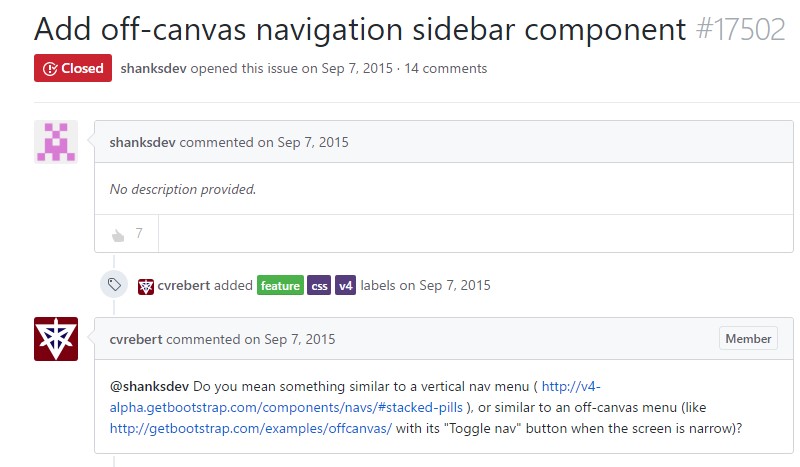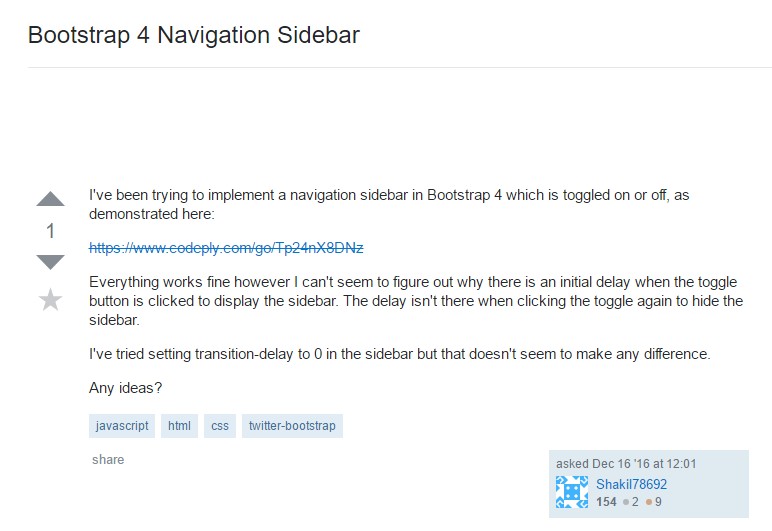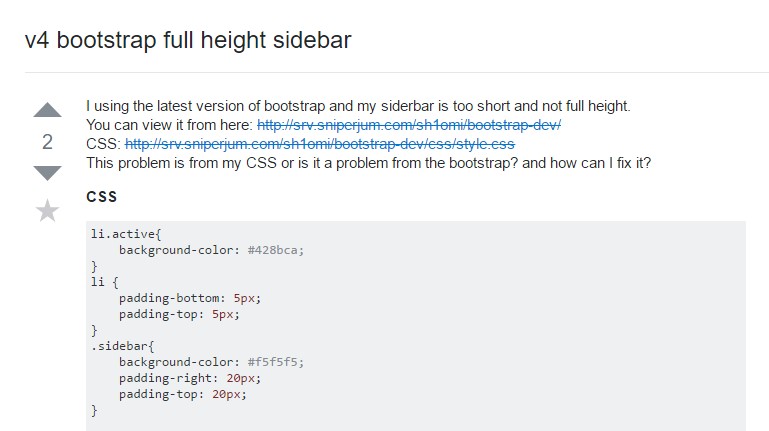Bootstrap Sidebar Example
Overview
In the majority of the webpages we currently spot the content spreads from edge to edge in size with a convenient site navigation bar just above and just efficiently gets resized as soon as the specified viewport is reached so that practically the showcased material fluently utilizes the whole entire width of the webpage provided. Nevertheless at a particular events the desired purpose the webpages ought to serve require together with the fluently resizing material section yet another section of the provided display width to get selected to a still vertical component together with some web links and material in it-- in shorts-- the popular from the past Bootstrap Sidebar element is wanted.
How to work with the Bootstrap Sidebar Dropdown:
This is pretty old strategy however supposing that you definitely want to-- you can surely build a sidebar element with the Bootstrap 4 framework that in addition to its own flexible grid system also present a couple of classes created particularly for developing a secondary level site navigation menus being simply docked along the webpage.
But let us begin it easy-- with just nesting some rows and columns -- It is supposed this perhaps the best way. And also by nesting I intend you can absolutely gave a .row element set inside a column one-- it basically operates the very same method with the exception of the obtainable columns in a single line limit-- if you nest a row within a column you can have up to the column's width spanning inner columns within it before they wrap to a new line.
And so let's say we require a right adjusted Bootstrap Sidebar Toggle with several web content inside it and a primary webpage to the left of it. We need to determine the grid tier down to what we need to keep this positioning before the sidebar and the main material stack over each other-- let's say-- medium and up. And so a possible method attaining this might be this:
First and foremost we require a container component to keep the rows and columns and given that we are certainly creating something a little bit more complicated the .container-fluid class might be the correct one to attach it to-- this way it will regularly spread over the entire visible width available.
Next we need a .row to wrap the main structure into which in our situation would certainly be a wide column for the material and a more compact-- for the sidebar-- let's say we'll break up the width in 9 by 3 columns in width. In such manner the primary column element should carry .col-md-9 and the second one - .col-md-3 class utilized.
Next within all of these columns we can easily just set up some excess .row features and pack them up up with a number of material making originally the major page and after it-- the contents of the sidebar like two smaller web pages laid out side by side.
A number of extra suggestions
Additionally in case you need to create a sidebar navigation menu along with the desired .col-* class you can assign it the .sidebar class and wrap the page’s main content into a <main> element applying it the rest width with a .col-* class and appropriate offset equal to the sidebar’s width to make the nicely display side by side.
Also in case you must produce a sidebar navigation menu together with the preferred .col-* class you can easily specify it the .sidebarclass and wrap the web page's major content into a <main> element utilising it the rest width by having a .col-* class and correct offset equal to the sidebar's width to get the nicely display side by side.
Take a look at some youtube video information regarding Bootstrap sidebar
Related topics:
Add in off-canvas navigation sidebar component

Stackoverflow: Bootstrap 4 Navigation Sidebar

V4 Bootstrap full height sidebar

HTML Bootstrap Responsive Menu Templates
JavaScript Bootstrap Collapse Menu Demos